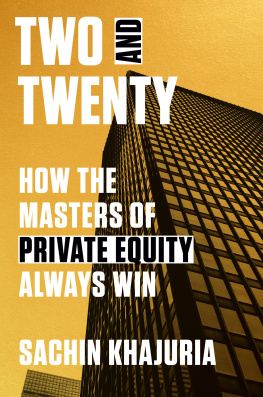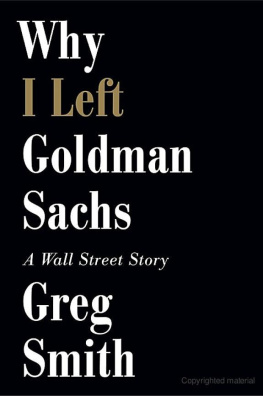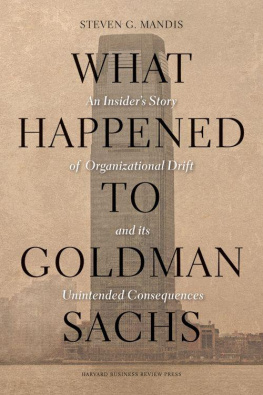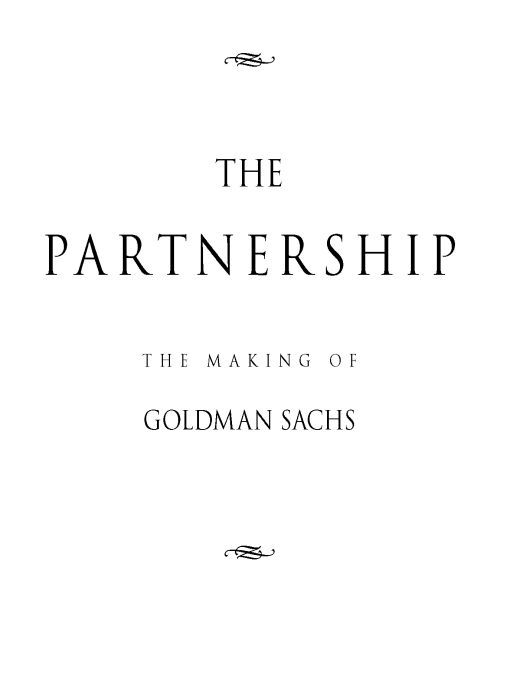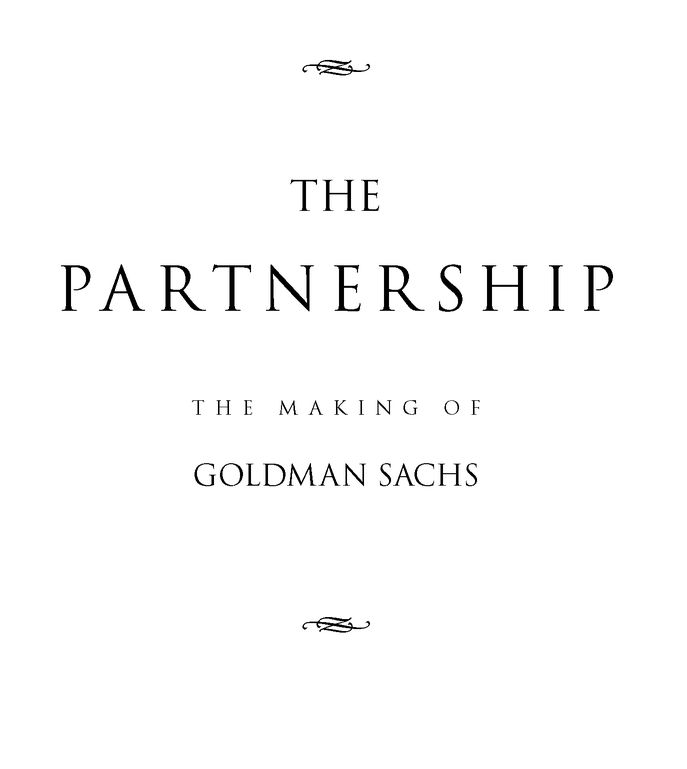Table of Contents
ALSO BY CHARLES D. ELLIS
CAPITAL: THE STORY OF LONG-TERM
INVESTMENT EXCELLENCE
WINNING THE LOSERS GAME
JOE WILSON AND THE CREATION OF XEROX
TO MY GRANDCHILDREN JADE, MORGAN, CHARLES, AND RAY
INTRODUCTION
This book was almost never writtenseveral different times. In the winter of 1963 at Harvard Business School, I was, like all my classmates, looking for a job. My attention was drawn to a three-by-five piece of yellow paper posted at eye level on a bulletin board in Baker Library. In the upper left corner was printed Correspondence Opportunities and typed to the right was the name Goldman Sachs. As a Boston securities lawyer, my dad had a high regard for the firm, so I read the brief description of the job with interest but was stopped by the salary: $5,800.
My then wife had just graduated from Wellesley with three distinctions: she was a member of Phi Beta Kappa, a soprano soloist, and a recipient of student loans. I was determined to pay off those loans, so I figured Id need to earn at least $ 6,000. With no thought of the possibility of earning a bonus or a raise, I naively knew I could not make it on $5,800. So Goldman Sachs was not for me. If I had joined the firm, like everyone else who has made a career with Goldman Sachs I would never have written an insiders study of Goldman Sachs.
In the early 1970s, while promising future partners that we would develop our fledgling consultancy, Greenwich Associates, into a truly superior professional firm, I had to laugh at myself: You dummy! You make the promise, but you dont even know what a truly superior professional firm is all about or how to get there. Youve never even worked for one. Youd better learn quickly.
From then on, at every opportunity I asked my friends and acquaintances in law, consulting, investing, and banking which firms they thought were the best in their field and what characteristics made them the best. Over and over again, well past the bounds of persistence, I probed those same questions. Inevitably, a pattern emerged.
A truly great professional firm has certain characteristics: The most capable professionals agree that it is the best firm to work for and that it recruits and keeps the best people. The most discriminating and significant clients agree that the firm consistently delivers the best service value. And the great firms have been and will be, sometimes grudgingly, recognized by competitors as the real leaders in their field over many years. On occasion, challenger firms rise to prominenceusually on the strength of one exciting and compelling service capabilitybut do not sustain excellence.
Many factors that contribute to sustained excellence vary from profession to profession, but certain factors are important in every great firm: long-serving and devoted servant leaders; meritocracy in compensation and authority; disproportionate devotion to client service; distinctively high professional and ethical standards; a strong culture that always reinforces professional standards of excellence; and long-term values, policies, concepts, and behavior consistently trumping near-term opportunities. Each great organization is a one-firm firm with consistent values, practices, and culture across geographies, across very different lines of business, and over many years. All the great firms have constructive paranoiathey are always on the alert for and anxious about challenging competitors. However, they seldom try to learn much from competitors: they see themselves as unique. But like Olympic athletes who excel in different events, they are also very much the same.
Armed by Greenwich Associates extensive proprietary research and working closely as a strategy consultant with all the major securities firms, I was in a unique position to make comparisons between competing firms on the dozens of salient criteria on which they were evaluated by their own clients market by market, year after year, and particularly over time. Over the years, I became convinced that my explorations were producing important discoveries that would be of interest to others who are fascinated by excellence, who retain professional firms for important services, or who will spend their working careers in professional firms. One discovery surprised me: In each profession, one single firm is usually recognized as the best of us by the professional practitionersCapital Group in investing, McKinsey in consulting, Cravath in law (nicely rivaled by Davis Polk or Skadden Arps), and the Mayo Clinic in medicine (nicely rivaled by Johns Hopkins). And Goldman Sachs in securities.
Ten or twenty years ago, many people in the securities business would have argued that other firms were as good or better, but no longer. (Much further back, few would have ever chosen Goldman Sachs.) For many years, it has seemed clear to me that Goldman Sachs had unusual strengths. Compared to its competitors, the firm recruited more intriguing people who cared more about their firm. Their shared commitments, or culture, was stronger and more explicit. And the leaders of the firm at every level were more rigorous, more thoughtful, and far more determined to improve in every way over the longer term. They took a longer-horizon view and were more alert to details. They knew more about and cared more about their people. They worked much harder and were more modest. They knew more and were hungrier to learn. Their focus was always on finding ways to do better and be better. Their aspirations were not on what they wanted to be, but on what they wanted to do.
Goldman Sachs has, in the last sixty years, gone from being a marginal Eastern U.S. commercial-paper dealer, with fewer than three hundred employees and a clientele largely dependent on one improbable investment banker, to a global juggernaut, serially transforming itself from agent to managing agent to managing partner to principal investor with such strengths that it operates with almost no external constraints in virtually any financial market it chooses, on the terms it chooses, on the scale it chooses, when it chooses, and with the partners it chooses.
Of the thirty thousand people of Goldman Sachs, fewer than half of one percent are even mentioned in this book, but the great story of Goldman Sachs is really their storyand that of the many thousands who joined the firm before them and enabled it to become todays Goldman Sachs. Goldman Sachs is a partnership. The legal fact that after more than a hundred years it became a public corporation may matter to lawyers and investors, but the dominating reality is that Goldman Sachs is a true partnership in the way people at the firm work together, in the way alumni feel about the firm and each other, and in the powerful spiritual bonds that command their attention and commitment.
The leaders of Goldman Sachs today and tomorrow may have even tougher jobs than their predecessors. The penalties of industry leadership, particularly the persistent demand to meet or beat both internal and external expectations for excellenceover and over again on the frontiers of competitive innovationare matched by the persistent challenges of Lord Actons warning: Power tends to corrupt. Absolute power corrupts absolutely.


